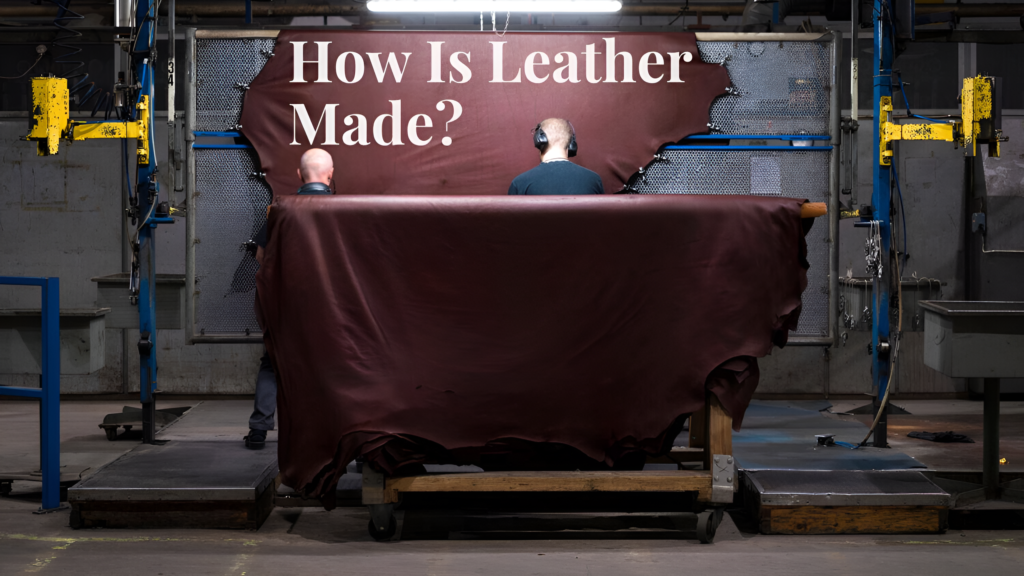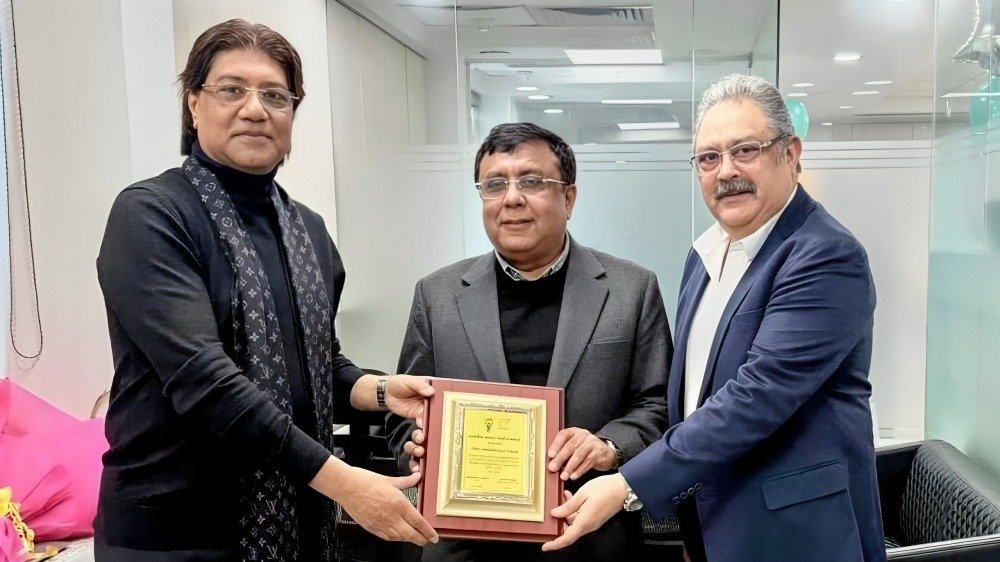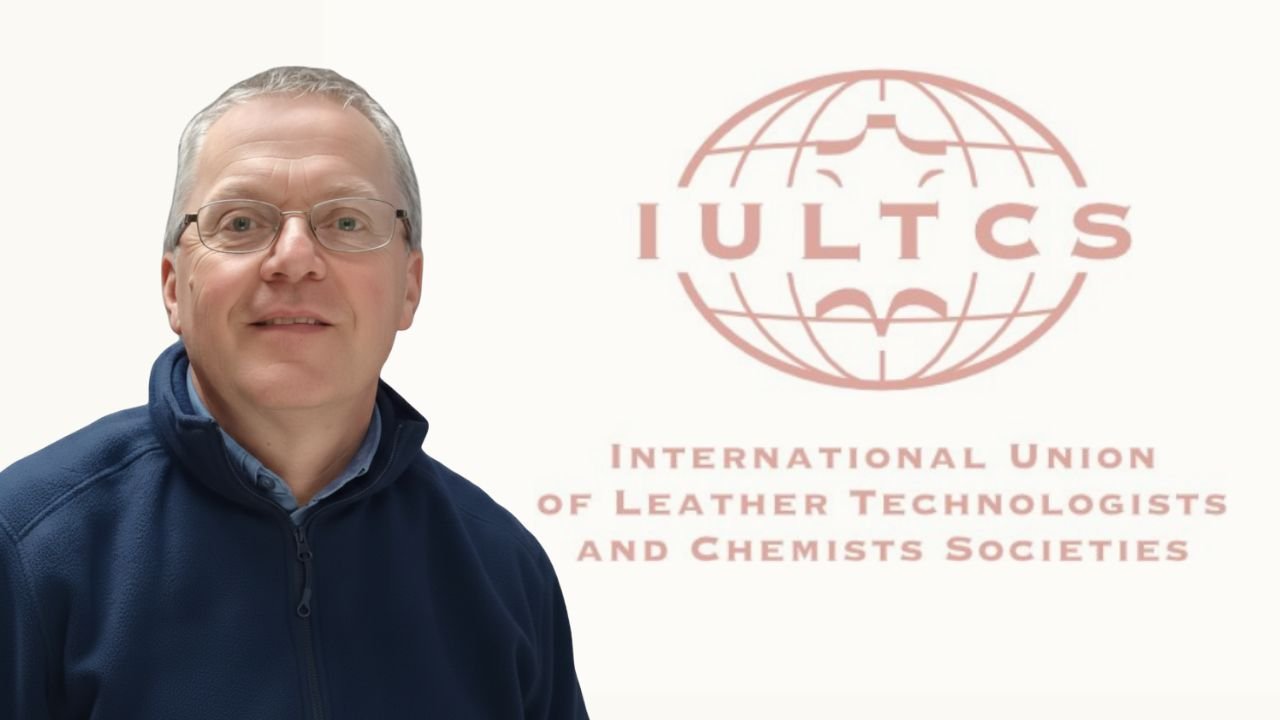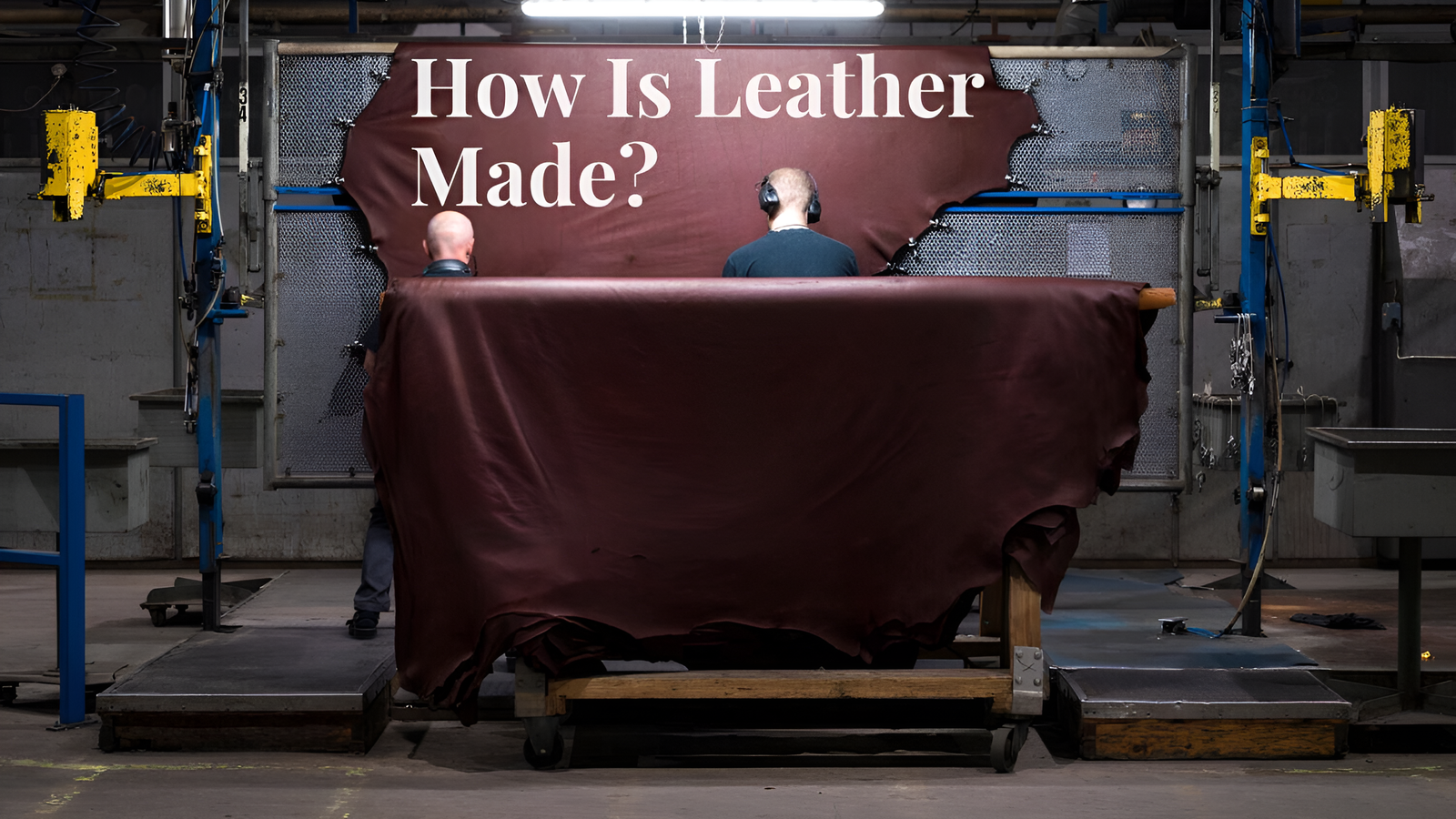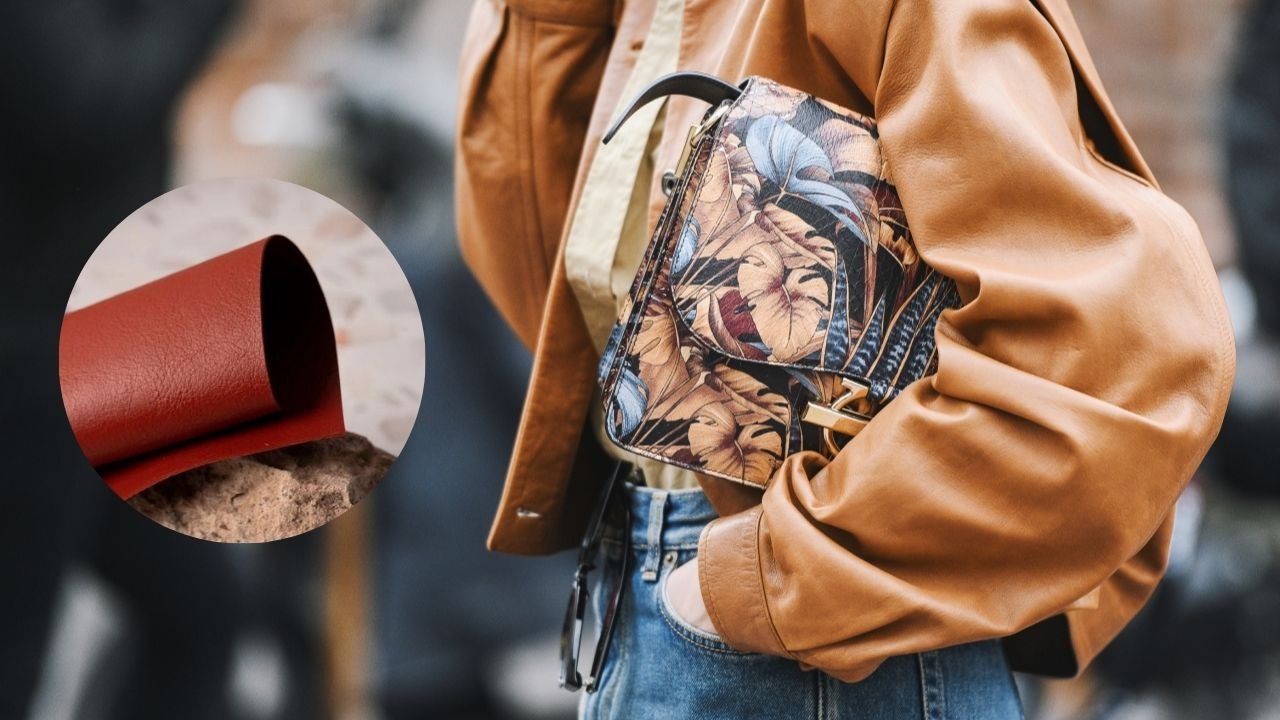Ever wondered how leather, that luxurious material we find in everything from shoes to sofas, actually gets made?
Well, you are not alone! I mean, we all love the final product, right? But when you stop to think about it, the process behind how leather is made can be quite fascinating.
It’s a blend of craftsmanship, science, and tradition. And let’s be honest, leather products just have this timeless charm, don’t they?
Now, if you are imagining leather as something that magically appears in stores, think again. There’s a whole journey involved in transforming raw animal hide into that supple, durable material we all adore.
From tanning to dyeing, the process of how leather is made is full of intricate steps that are worth knowing about.
So, buckle up because we are diving into the fascinating world of leather production and trust me, by the end of this, you will appreciate that leather jacket you have been eyeing even more.
Whether you are someone who’s just curious about the process or maybe a future leather enthusiast (haha), understanding how leather is made can change the way you view your favorite leather products.
Ready to learn? Let’s break down the whole journey – from the first hide to the finished product – so you can better appreciate the craftsmanship behind every piece.
So, next time someone asks, “How is leather made?” you will have a pretty cool answer, and might even impress them with some fun facts! Ready? Let’s get started!
What is Leather?
Leather is more than just a material—it’s a timeless fabric that’s been around for thousands of years.
We see it in everything from the shoes on our feet to purses and the luxurious jackets we love to wear. But what exactly is leather, and why is it so special? Let’s break it down
At its core, leather is a natural product by-product from the meat Industry made from the hide & skins of animals like cows, goats, sheep and even exotic animals like ostriches and crocodiles (although these are less common, and usually more expensive and banned in many countries)
The process of turning raw animal hides and skins that we get straight out of the slaughter house into leather involves various steps, which we will dive into later, but essentially, it starts with the skin being tanned (we will talk more about this in the next section).
So, In simple words, the definition of leather is
“A TANNED ANIMAL HIDE/SKIN IS KNOWN AS LEATHER“
Leather is not just strong and durable; it’s also versatile. Depending on the tanning and finishing process, leather can be soft, stiff, shiny, matte, or even textured, allowing it to be used for a wide range of products like shoes, bags, furniture, accessories, and more.
It’s no wonder we see leather in everything from luxury handbags to automobile seats!
But leather isn’t just about what it’s used for.
It’s also about the “experience“.
Ever notice that distinct smell when you walk into a store with leather goods? Ah, yes, that rich, earthy scent!
It’s the aroma of genuine leather, something no synthetic or vegan material can quite replicate. It’s kind of like a signature of authenticity.
Now, you might be wondering, “What’s the difference between real leather and fake leather?”
Great question!
While real leather is made from natural animal hides, synthetic leather (also known as faux leather or vegan leather) is made from plastic-based materials like PVC or polyurethane.
“No hard feelings but in simple words these materials are not even leather, they are basically plastic using the word leather just to market their product“
Synthetic leather mimics the look of the real thing, but it lacks the feel, breathability, longevity, and natural aging process of genuine leather.
Fake leather doesn’t quite have that same magic as real leather.
In the end, leather is not just a material—it’s an experience, a history, and a lifestyle.
Whether you are holding a sleek leather wallet or sitting on a soft leather couch, you are engaging with a piece of craftsmanship that has stood the test of time.
The Leather Making Process: A Step-by-Step Guide

If you have ever wondered how leather transforms from raw animal hide or skin into the sleek, stylish material we see in jackets, shoes, and bags—well, you are in for a treat (Haha).
The process isn’t just about looks, it’s a meticulous journey that combines art, science, and a lot of passion. Let’s walk through it step by step.
Before the start the leather manufacturing process, we need the raw material right? so the talk about it.
Sourcing Raw Materials
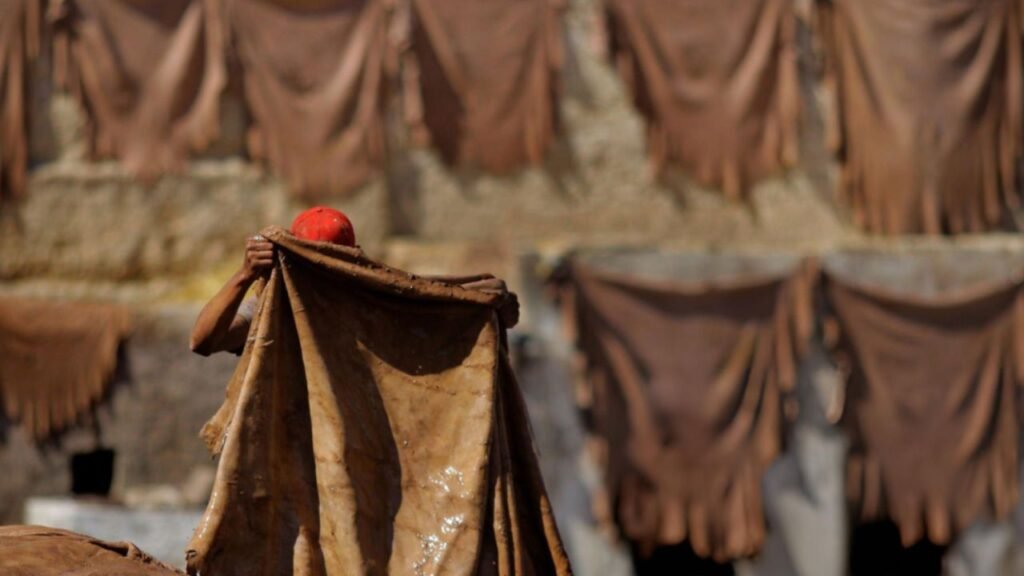
It all begins with hides & skins mostly cow, goat, or sheep skins. These are often byproducts of the meat industry, so leather-making is like the ultimate recycling project. “Why waste it when you can wear it?” Haha, right?
Fun fact: The quality of leather starts with how the hide is treated right after the animal’s processing. If it’s not properly preserved, the journey ends before it even begins.
So once the raw material is collected from the slaughter house you make sure the raw hide/skins are preserved so that they do not get putrefied, lets talk a bit about this process which is called as “curing”
Preparing the Hides/Skins (Curing)
Think of this as the prep stage.
Hides are cleaned, and cured using salt (Mostly), or air-dried to keep them from decomposing (putrefied). After all, nobody wants smelly leather—no thanks!
So now they can be kept aside for even monthly before you start the leather manufacturing process without decomposing.
Now that you have understood the prep steps, lets delve into the leather manufacturing process and see how is leather made?
So before we start please have a look at the picture attached above to understand the whole process
When it comes to making leather, the process isn’t just about turning hides into something beautiful and durable.
It’s a meticulous journey, divided into four key stages: Pre-tanning, Tanning, Post-tanning, and Finishing.
Let’s roll up our sleeves and dive into the pre-tanning process, the very first step that transforms raw animal hides into the foundation of high-quality leather. Ready? Let’s go!
Step 01 Pre-Tanning Process: What Happens During Pre-Tanning?
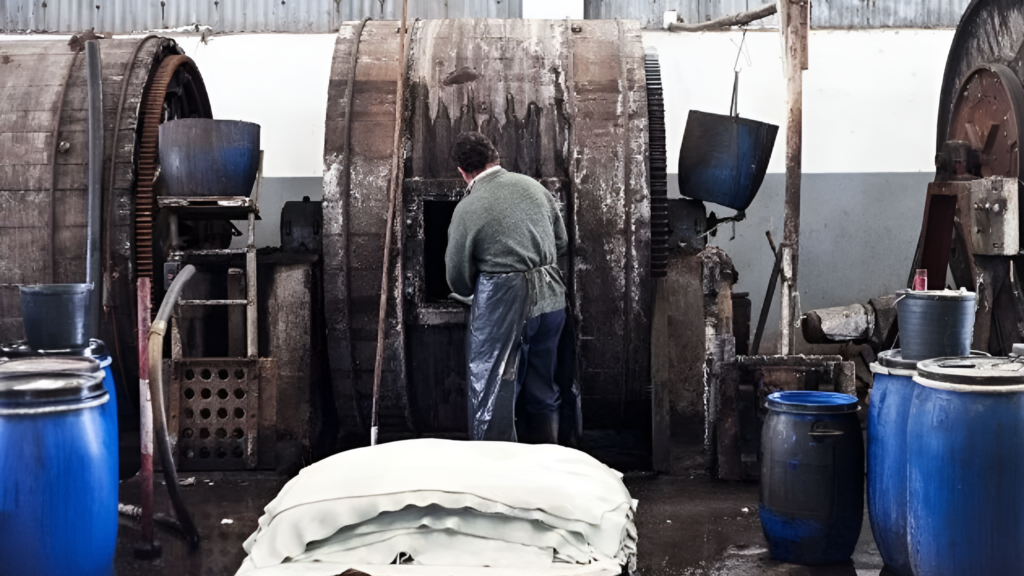
Pre-tanning is where all the magic begins.
Think of it as the “prep work” before the real transformation starts. This stage involves multiple steps, each building upon the last to prepare the hides for tanning.
And yes, there’s a lot happening here, so let’s break it down step by step (don’t worry, I’ll keep it simple and fun).
1. Soaking
Imagine this: the raw hide arrives stiff, dirty, and let’s face it—not very appealing. So, the first step is to soak it in water to rehydrate and clean it.
This process removes dirt, blood, and salts used during curing. Think of it as giving the hide a nice, long bath to get it back to its natural, flexible state.
💡 Fun Fact: Without soaking, the leather would be too brittle to work with or break. No one wants crackly leather, right?
2. Liming
Next up is liming, where hides are treated with a lime solution to loosen the fibers and break down hair follicles. This process not only softens the hide but also swells it up to make it easier to handle later on.
And here’s the kicker: liming prepares the hide for one of the most satisfying steps—unhairing.
3. Un-hairing
Okay, so this part might sound a bit odd, but it’s necessary.
During unhairing, all the hair is removed from the hide and skin using sodium sulphide. Picture someone scraping off the fuzz from a peach—but on a much bigger scale. Haha!
By the end of this step, the hide/skins starts looking a bit more like the leather we know (but don’t get too excited—we are not there yet).
4. De-liming
Once the hair’s gone, the hides are tossed into large drums for deliming.
This process neutralizes the lime used earlier, restoring the pH balance of the hide. Think of it as giving the hide a little “reset” to prepare it for the next steps.
5. Bating
Now comes bating—a term you probably don’t hear every day.
In this step, special enzymes are added to further soften the hide/skin and make it smoother (depends on the end use of the leather. lets say if you are making a shoe sole leather, then ofcourse you will skip this process).
If leather were a loaf of bread, bating would be like letting the dough rest for that perfect texture.
6. Pickling
Pickling marks the final step in the pre-tanning process.
Yes, you read that right—pickling! But no, we are not turning hides into snacks.
This involves treating the hides with an acidic solution to make them resistant to bacterial growth and prepare them for tanning.
For certain types of leather, extra steps like de-pickling, degreasing (if its a sheep skin from a colder region to remove the excess fat), and re-pickling might come into play, but these are used only for specific needs.
Usually, pickling wraps up the pre-tanning stage, leaving the hides ready for tanning.
Alright, we have soaked, limed, unhaired, and pickled our way through the pre-tanning process. Now, it’s time to roll up our sleeves and get to the exciting part: Tanning.
This is where the raw hides or skins go from being just, well… skin, to becoming actual leather.
This stage is the heart of the leather-making process, and trust me, it’s where the magic really happens.
Step 02 Tanning: What Is Tanning and Why Is It Important?
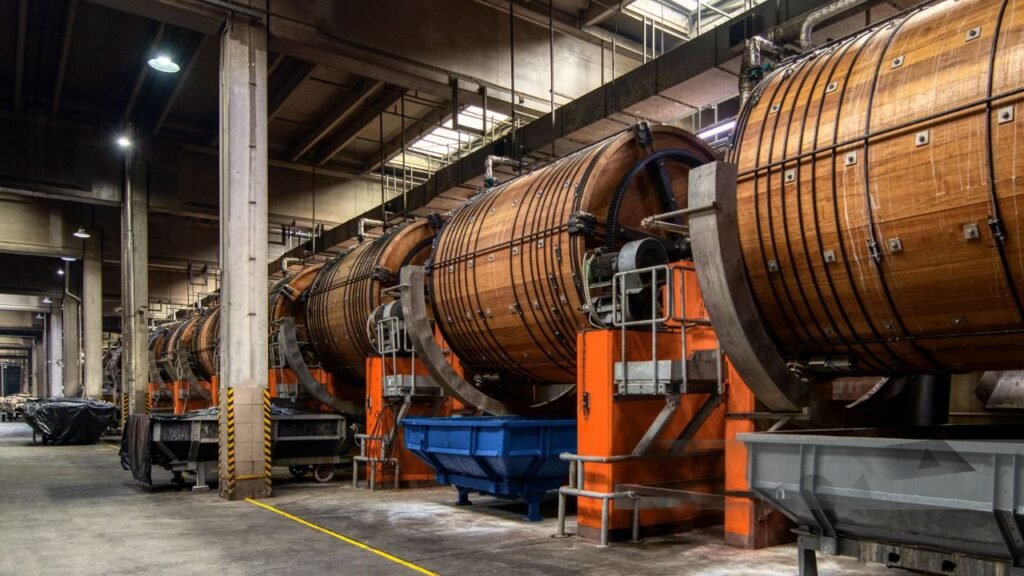
Tanning is all about preserving and strengthening the hides. Without tanning, the material would decompose and fall apart (yikes).
This process stabilizes the protein structure of the hide, making it durable, flexible, and resistant to wear and tear.
Think of tanning as giving the leather its forever makeover (Haha).
But here’s the fun part: not all tanning is created equal.
Depending on the desired end-product, the process can vary.
Let’s explore the different types of tanning methods that transform raw hides into stunning, versatile leather.
Types of Tanning Processes
1. Organic Tanning (Vegetable Tanning)
Let’s start with the OG of tanning—organic tanning, also called vegetable tanning (aka veg tanned leather)
This method uses natural substances like tree bark, leaves, and other plant-based extracts to tan the hide.
Why choose it?
It’s eco-friendly and gives leather that rich, earthy tone and unique patina over time.
Think of your favorite vintage leather bag—it probably owes its charm to vegetable tanning.
Fun Fact: Vegetable-tanned leather can take several weeks to produce, but the result is worth every minute. “Good things take time,” as they say!
2. Inorganic Tanning
Now, if speed is the name of the game, inorganic tanning is your go-to.
This method primarily uses chromium salts (hence why it’s also called chrome tanning) to tan hides/skins in a matter of hours.
Why choose it?
It’s quick, efficient, and produces soft, flexible leather often used in fashion and upholstery.
Perspective: While chrome tanning has a smaller environmental footprint during production, the disposal of its byproducts requires careful handling to avoid pollution. Balance is key here!
3. Combination Tanning
Why settle for one method when you can have the best of both worlds?
Combination tanning merges organic and inorganic processes to deliver leather with enhanced qualities.
How it works
Typically, the hide undergoes chrome tanning first for softness and durability, followed by vegetable tanning for added structure and a natural finish. (commonly known as semi-chrome leather or chrome-retanned)
Who loves it?
Footwear and luxury goods manufacturers often swear by this method because it produces leather with versatility and strength.
Usually used for specific type of leather called suede leathers
In the next stage, we will look at Post-Tanning—where the leather gets its colors, textures, and finishing touches.
Step 3: Post-Tanning – The Art of Refining Leather
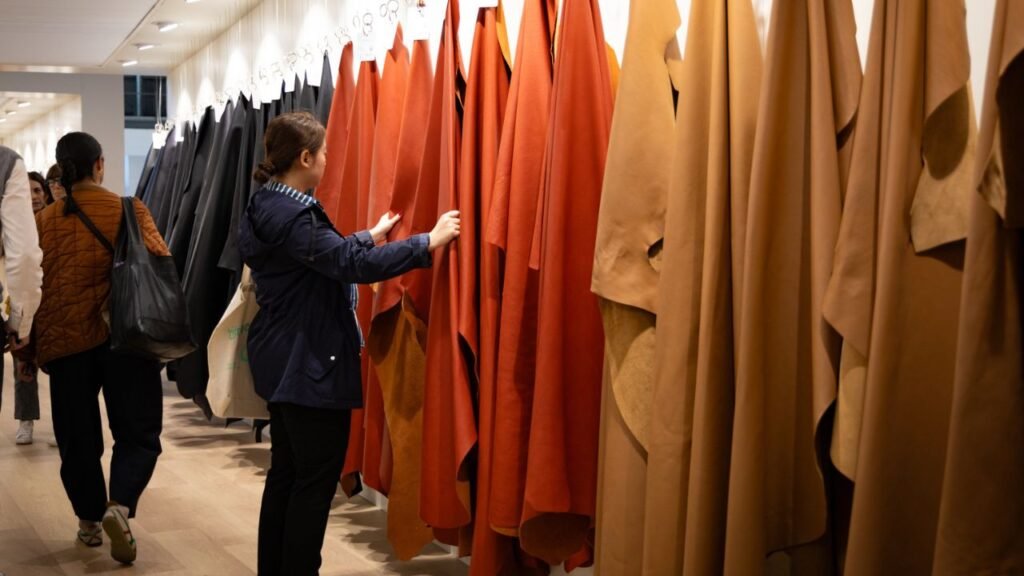
We have transformed raw hides into leather with tanning, but we are not done yet.
Welcome to post-tanning, where the leather gets its personality based on the end functional use of it.
Think of it like getting a haircut, choosing your outfit, and adding accessories—it’s all about refining, enhancing, and tailoring the leather to meet its final purpose.
Let’s dive into this fascinating process, where science meets art, and hides become the luxury material we all adore.
What Is Post-Tanning?
Post-tanning is a series of treatments that improve the leather’s properties, such as texture, color, durability, and flexibility.
This step ensures the leather is ready to be crafted into anything from shoes to handbags.
Here’s a breakdown of what happens in post-tanning:
1. Re-chroming
First up is rechroming, where leather is treated again with chromium salts to enhance its durability.
It’s like giving the leather an extra shot of strength.
Why it matters
This step ensures the leather can withstand the rigors of daily use without cracking or losing its shape.
Perspective: “Think of rechroming as a reinforcement—it’s the secret behind those timeless leather goods that survive years of wear and tear.”
2. Neutralization
Next is neutralization, a chemical process that adjusts the pH levels of the leather.
Why it’s done?
Tanned leather can be slightly acidic, which might cause issues later.
Neutralizing it creates a stable base for the upcoming processes.
Fun Thought: It’s like giving the leather a spa day to balance its “skin tone.” Fancy, right? (Haha).
3. Re-tanning
In this step, the leather is treated with additional tanning agents to enhance specific properties.
What happens here?
Retanning can add softness, structure, or specific textures, depending on what the leather is destined to become.
Perspective: Retanning is what makes a leather jacket soft and flexible while ensuring your leather shoes are sturdy and supportive.
4. Dyeing
Here’s where the magic happens!
Dyeing gives the leather its vibrant hues, from classic browns to bold reds.
Why it’s fun?
Dyeing allows for endless customization.
Whether you are a fan of earthy tones or eye-popping colors, this step brings your leather dreams to life.
“Coloring leather is an art form—it’s where chemistry and creativity collide.”
5. Fatliquoring
Don’t let the name confuse you fatliquoring is about adding oils and fats to the leather to keep it soft and pliable.
Why it matters?
This step prevents the leather from becoming stiff and brittle over time.
It’s like moisturizing your skin, ensuring it stays supple and smooth.
6. Drying
After all that soaking and treating, the leather needs to dry.
Depending on the desired texture, it can be air-dried, vacuum-dried, or pasted onto glass plates for a smooth finish.
Why it’s crucial?
Proper drying ensures the leather retains its shape and properties.
7. Mechanical Operations
Finally, the leather undergoes mechanical operations such as stretching, buffing, and polishing.
Why it’s essential?
These processes ensure uniformity and give the leather its final texture and sheen.
Its like ironing your clothes before heading out—no wrinkles allowed (Haha).
Post-tanning is all about refinement and perfection.
From strengthening the leather to infusing it with vibrant colors and luxurious softness, every step plays a crucial role in creating a high-quality product.
“Leather isn’t just made, it’s nurtured, polished, and perfected into an elegant masterpiece.”
Now that our leather is prepped and perfected, we’ll move on to the final stage: Finishing.
This is where the leather gets its glossy shine, protective coatings, and texture. Keep an eye out as we bring this process full circle!
Step 4 Finishing: The Final Stage of leather Making

Ah, here we are—the finishing stage, where all the hard work from the previous steps comes together to create the leather we know and love.
If leather were a celebrity, this would be its red-carpet moment (Haha).
Finishing is subjective and it is all about doing the magic on the top-surface of the leather style, protection, and personality, ensuring the leather looks great and lasts long.
Let’s dive in and explore how this final step works its magic.
What Is Finishing?
Simply put, finishing is the cherry on top.
It involves adding surface treatments that enhance the leather’s appearance, durability, and feel.
This is where leather gets its final texture, color depth, and shine—or even that classy matte look.
1. Coating
The first step in finishing is applying a protective coating to the leather’s surface.
Why it’s important?
This coating shields the leather from moisture, stains, and scratches. Think of it as a raincoat and sunscreen combined!
2. Polishing: Shiny or Matte?
Polishing is where the leather’s personality really shines—literally.
Depending on the desired look, it can be given a high-gloss finish, a smooth satin sheen, or a trendy matte appearance.
3. Embossing: Adding Texture and Patterns
Ever seen leather with intricate patterns or textures?
That’s thanks to embossing.
This process uses heated plates or rollers to press designs into the leather.
Why it matters?
From crocodile textures to floral patterns, embossing transforms plain leather into a fashion statement.
4. Coloring and Top Coating
Yes, leather gets another dose of color here matching the base color.
This step ensures uniformity and depth while adding a protective top coat.
The Importance of Finishing
Finishing isn’t just about aesthetics, it’s about crafting leather that’s beautiful, durable, and ready to wow. This stage ensures the leather can handle everyday use while maintaining its charm.
“Leather doesn’t become iconic by chance. Finishing is the art of turning great leather into unforgettable leather.”
Conclusion – Bringing It All Together
From pre-tanning to this final finishing stage, leather undergoes a fascinating transformation.
The finishing process is what makes leather truly unique, adding the finishing touches that elevate it from a raw material to a luxurious product.
And there you have it—the leather-making journey and this this is how leather is made, step by step.
So the next time you admire a leather jacket, bag, shoe or wallet, take a moment to appreciate the craftsmanship and care that went into every detail.
In simple words, Leather manufacturing is a fascinating blend of science, craftsmanship, and creativity.
Did you learn something new about how leather is made? and the journey of turning raw hides into luxurious leather? Or maybe you have questions about a specific step?
Drop your thoughts or questions in the comments below
I hope this article was informative. It took us a lot of time to research, fact-check, and write this article.
Please add a comment down below it would really motivate us, take care and have a nice day ahead.
Related article
Stahl Sells Wet-End Leather Chemicals Business to Syntagma Capital
Dean Shoes Invests $118 Million in Tamil Nadu Creating 15000 Jobs





